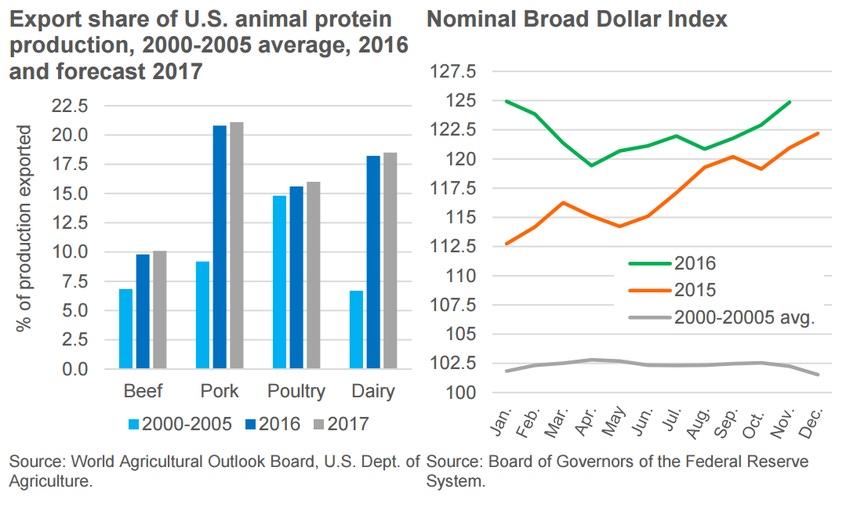Export growth continues despite higher U.S. dollar.

Exports have become an important component of demand for U.S. animal proteins, according to the latest U.S. Department of Agriculture “Livestock, Dairy and Poultry Outlook.” In fact, shares of U.S. production of beef, pork, poultry, and dairy exported have increased significantly over the past decade (Figure), with further increases expected in 2017.
According to the report, one determinant of demand for U.S. animal proteins is the foreign currency price of the U.S. dollar. Foreign buyers of U.S. goods must buy U.S dollars with units of their currency. When the exchange-rate value of the U.S. dollar increases, foreign buyers must sell more units of their currency in order to buy U.S. dollars. This means that when the U.S. dollar appreciates in value relative to the currencies of foreign buyers, U.S. animal proteins become more expensive and foreign demand for U.S. animal products declines.
According to the report, the Broad Dollar Index of the Federal Reserve Bank was significantly higher this year and also in 2015 compared to the average of 2000- 2005 (Figure). Despite higher U.S. dollar index values, however, export shares of U.S. animal proteins have mostly increased since 2000-2005, USDA said.
“Lower U.S. animal protein prices from supply increases have helped to offset the negative effects of U.S. dollar appreciation. Foreign demand for U.S. animal protein products has also increased due to foreign income and population gains and from negative supply shocks, like the recent one in China’s pork sector.”
About the Author(s)
You May Also Like
.png?width=300&auto=webp&quality=80&disable=upscale)


